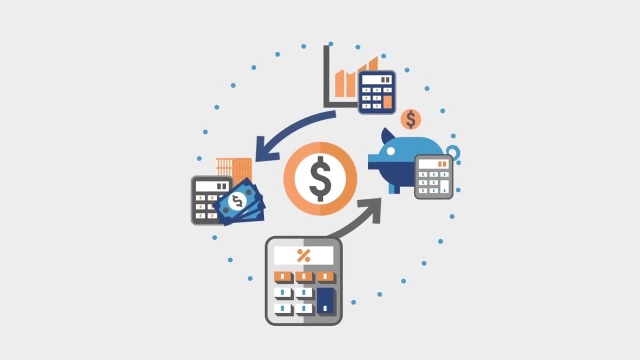In an ever-evolving digital landscape, automation continues to revolutionize various industries, and the realm of banking is no exception. With the rise of robo-banking, financial institutions are now harnessing the power of automation to streamline processes, enhance customer experiences, and maximize efficiency. The integration of cutting-edge technologies, such as artificial intelligence and machine learning, has paved the way for a new era in the financial world, reshaping how we perceive and interact with traditional banking services.
The advent of banking automation brings with it a multitude of exciting possibilities. By leveraging sophisticated algorithms and advanced data analytics, institutions can now automate routine tasks that were once time-consuming and prone to human error. From account opening and verification to loan processing and risk assessment, banking automation solutions offer a seamless and expedited experience for both customers and financial institutions, ensuring a smoother and more reliable operation.
Furthermore, the transformative impact of automation is not limited to transactional processes alone. With the rise of chatbots and virtual assistants, customers can now access personalized and responsive support around the clock. These intelligent systems are capable of providing real-time assistance, answering queries, and even offering tailored financial recommendations. As a result, customers no longer need to wait in long queues or rely solely on conventional customer support channels, as banking automation solutions strive to deliver enhanced convenience and accessibility.
As we delve deeper into the realm of robo-banking, it becomes apparent that automation has the potential to reshape the entire banking landscape. With its ability to optimize operations, improve accuracy, and provide greater accessibility, banking automation is revolutionizing the way financial institutions operate and interact with customers. In this ever-evolving digital age, embracing the power of automation becomes imperative for an industry that constantly seeks to offer efficient, reliable, and innovative financial solutions.
Benefits of Banking Automation

Automation in the banking industry brings numerous benefits to both banks and customers. By adopting banking automation solutions, financial institutions can streamline their operations, improve efficiency, and offer enhanced services to their customers.
Firstly, banking automation allows for faster and more accurate transaction processing. With automated systems in place, banks can handle large volumes of transactions with minimum manual intervention. This reduces the risk of errors and delays, ensuring that customers’ transactions are processed promptly and accurately.
Secondly, automation enables banks to provide round-the-clock access to their services. Automated teller machines (ATMs) and online banking platforms allow customers to perform transactions and access account information at any time, without the need for physical branch visits. This convenience not only increases customer satisfaction but also helps banks reach a wider audience by overcoming physical limitations.
Lastly, banking automation enhances data security and fraud prevention. Automated systems employ robust security measures, such as encryption, to protect customers’ confidential information. Additionally, automation enables banks to implement advanced fraud detection algorithms, which can identify suspicious activities in real-time and prevent potential financial losses.
In conclusion, banking automation brings a multitude of benefits to the financial world. From improved transaction processing speed and accessibility to enhanced security measures, automation enables banks to operate more efficiently and deliver better services to their customers. By embracing automation, the banking industry can harness the power of technology to drive innovation and enhance overall banking experiences.
Software To Create Forms
The Role of Artificial Intelligence in Robo-Banking
As technology continues to advance at an unprecedented pace, the financial world has embraced the power of automation. One key component of this evolution is the integration of artificial intelligence (AI) in robo-banking.
AI plays a pivotal role in robo-banking, enabling financial institutions to provide more efficient and personalized services to their customers. With the help of sophisticated algorithms, AI can analyze vast amounts of data in real-time, allowing for quick decision-making and accurate risk assessment. This level of automation not only reduces the processing time but also enhances the overall customer experience.
By harnessing the capabilities of AI, robo-banking solutions can cater to individual needs and preferences. These technologies can analyze customers’ financial behavior, identify patterns, and provide valuable insights to help them make informed decisions. Whether it’s suggesting investment opportunities or highlighting potential saving strategies, AI-powered robo-advisors can act as invaluable guides in managing personal finances.
Moreover, AI-driven chatbots have revolutionized customer service in the banking industry. These intelligent assistants are capable of understanding and responding to customer queries promptly. By leveraging natural language processing and machine learning technologies, chatbots provide seamless and personalized support to customers, ensuring a positive engagement.
In conclusion, the integration of artificial intelligence in robo-banking has transformed the financial landscape. It offers unparalleled efficiency, personalized services, and improved customer experiences. As technology continues to advance, we can expect even greater advancements in banking automation, further empowering individuals and businesses alike.
Challenges and Future of Banking Automation
The rapid advancements in banking automation have brought about significant changes to the financial world. While these technological innovations have streamlined operations and improved productivity, they also present some unique challenges. In this section, we will discuss the challenges faced by banking automation and explore its future prospects.
One of the primary challenges of banking automation is the potential threat to job security. As processes become automated, there is a concern that jobs traditionally performed by human bank employees may become redundant. While automation offers increased efficiency, it is essential to strike a balance between adopting technological solutions and preserving employment opportunities.
Another challenge lies in maintaining data security and privacy. With increased automation, there is a greater dependency on digital systems, making banks more susceptible to cyber-attacks and data breaches. As banking automation expands, it becomes crucial to invest adequate resources in cybersecurity measures to protect customer data and instill trust in the system.
Additionally, there is a need for continuous adaptability and upskilling among banking professionals. As technological advancements reshape the industry, employees must acquire the necessary skills to operate and leverage automation tools effectively. Investing in employee training and fostering a learning culture will be vital in achieving a smooth transition to a more automated banking system.
Looking towards the future, banking automation holds immense potential for further innovation. As artificial intelligence and machine learning continue to advance, we can expect enhanced customer experiences through personalized banking services. Automation can enable banks to gather vast amounts of data, allowing for more accurate risk assessment and fraud prevention.
In conclusion, while banking automation offers numerous benefits, it also brings forth its fair share of challenges. Striking the right balance between automation and human involvement, ensuring data security, and fostering a culture of adaptability are key to harnessing the power of automation in the financial world. As we move forward, the future of banking automation looks promising, with endless possibilities for improving efficiency and customer satisfaction.



